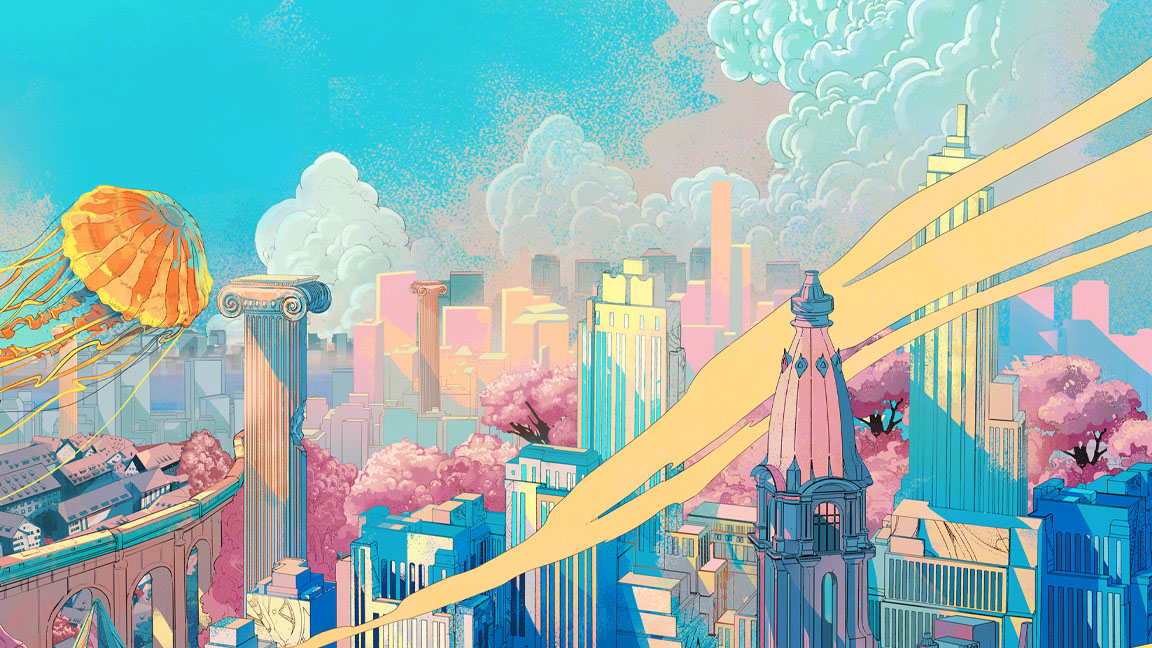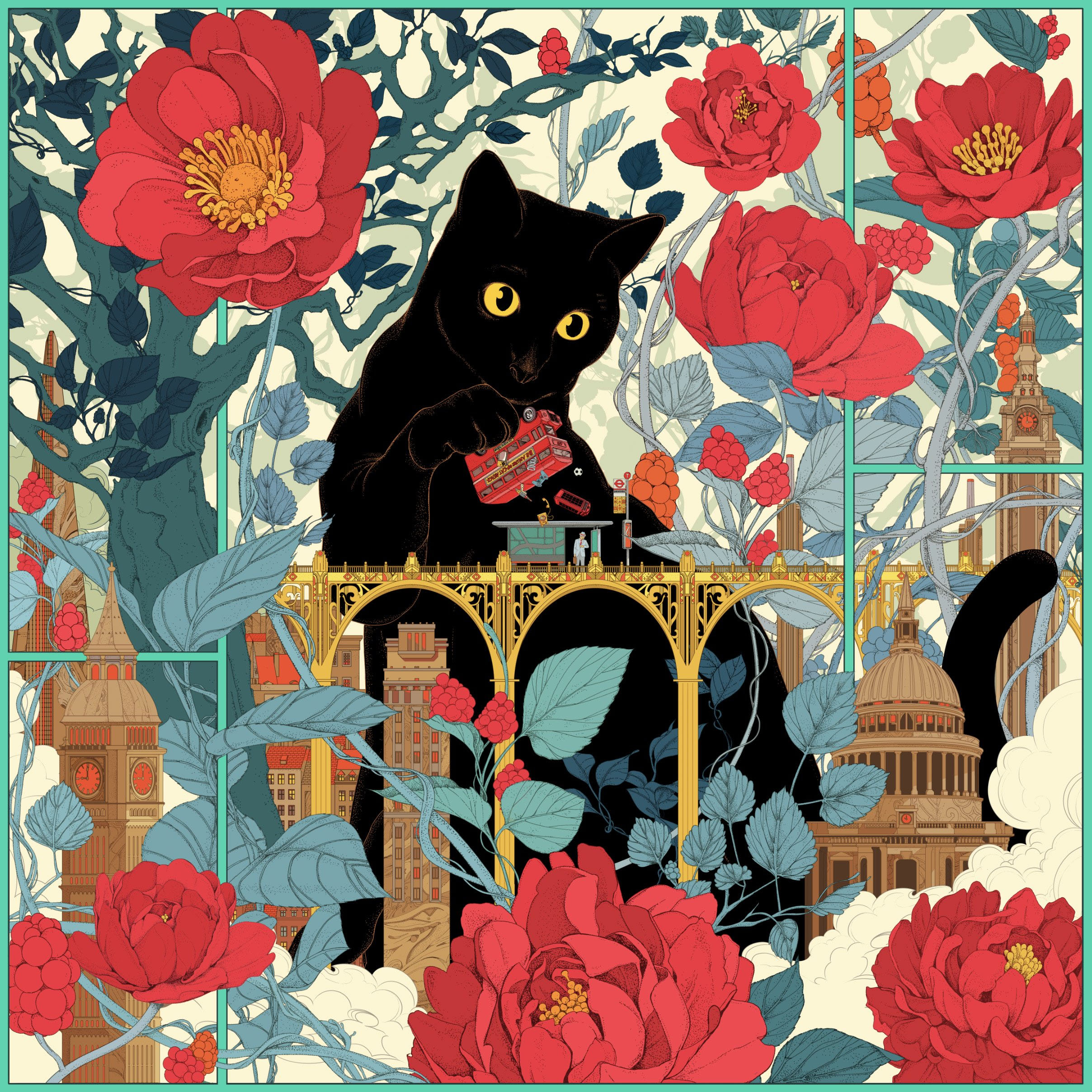AI will force "dramatic changes" says illustrator Shan Jiang
The acclaimed illustrator, who has worked for Netflix, Apple and XPPen, reveals the mix of influences on his art, what the future holds.

Artist Shan Jiang has worked with many of the world's leading brands, from Apple to Nike. His latest project included creating the illustration and box design for XPPen's newest drawing tablet, the XPPen Artist Pro 19 (Gen 2).
You can read more about what Shan looks for in a drawing tablet in my recent advice article with the artist, it's definitely worth a read before choosing from one of the best drawing tablets. He also painted the illustration for the box design of the XPPen Artist 22 Plus, you can see it below.
Below I chat to the artist about his approach, inspirations and influences. He reveals more of his workflow and how he creates the clean, intricate line art of his best illustrations. If you're inspired by Shan's approach to art and feel the urge to get creative, then why not also enter XPPen's 'Future Me' global drawing content, a challenge Shan is judging (the deadline for entries is 15th October).





How would you describe your artistic style?
At its core, my artistic style is rooted in figurative illustration, with a strong emphasis on storytelling through the use of symbolic objects drawn from both my personal life and visual experiences. Each element I incorporate holds a deeper meaning, serving as a visual metaphor that reflects my inner world. Recurring themes such as summer, cityscapes, ruins, and plants are central motifs in my work, each carrying a unique narrative weight that adds layers of interpretation and emotion.
These symbols often evoke a sense of nostalgia, transformation, and introspection, guiding viewers on a journey into my subconscious. In many ways, the process of creating my art feels like an exploration of my own psyche, where each piece becomes a map charting the emotional landscapes of my memories and experiences. Through this approach, my illustrations blend the tangible with the symbolic, inviting viewers to engage not just with the visuals, but with the stories and emotions that lie beneath the surface.

Can you walk us through your creative process, from the initial concept to the final piece?
My creative process begins with moments of reflection, which can occur spontaneously during everyday activities like walking or cooking. Once an idea takes shape, I quickly capture it in the form of a rough sketch, either on paper or digitally, to preserve the initial concept. From there, I refine the sketch into more recognisable shapes, gradually developing the composition.
After this initial refinement, I gather relevant references to support the drawing, using them to inform the details and context of the piece. At this stage, I create a more structured rough sketch and typically add basic colours to explore the mood and palette.
If I’m working on a commission, I’ll share this draft with the client to gather feedback and ensure the direction aligns with their vision. Once I’m satisfied with the rough sketch and colour scheme, I move on to finalising the artwork.
My technique usually involves hand-drawing the line art with pencil and pen, giving the piece an organic, tactile quality. I then transition to digital, where I use a tablet and digital pen to add colour and texture, bringing the piece to life with precision and vibrancy.

How do you balance traditional and contemporary influences in your art?
For me, every contemporary artistic style is deeply rooted in tradition. This understanding allows me to appreciate the intricate connections between the past and the present, revealing how historical movements and techniques have shaped modern expressions. Recognising that each contemporary style carries echoes of its predecessors opens up a wealth of inspiration derived from art history.
By delving into traditional forms, I can discover timeless themes, techniques, and philosophies that resonate with today’s artistic landscape. This exploration not only enriches my own work but also fosters a deeper appreciation for the evolution of art. Understanding these roots encourages me to blend historical influences with contemporary ideas, creating a unique synthesis that honours the past while embracing innovation. In this way, I find endless inspiration in the stories and aesthetics of earlier art movements, which continue to inform and invigorate my creative process.
What are some of the major artistic influences that have shaped your work?
Rooted in a deep appreciation for art history, my style is a synthesis of various artistic movements and cultural references. Influences ranging from Chinese Meticulous Art to the elegance of Ukiyo-e, from the avant-garde principles of Bauhaus design to the intricate detail of Durer's work, shape the visual language of my creations.
I love works from 宫素然(Gong Su Ran), Ito Jakuchu, Jean Giraud, 陈容(Chen Rong) and Kyoshi Awazu. Vincent van Gogh is my ultimate hero in the world of art. When it comes to illustration, there are countless masters who have greatly influenced my work, and the list of heroes continues to expand every day.

How does your background and cultural heritage influence your art?
My artistic inspiration is profoundly rooted in the vibrant tapestry of life in Shanghai, my hometown. Growing up amidst its unique streets, diverse cultures, and iconic buildings has significantly shaped my creative vision. I am particularly captivated by the architectural marvels that adorn the Shanghai skyline, the bustling streets filled with life, and the nostalgic presence of bicycles, winding lanes, community parks, and lively food markets.
Having spent 20 years in England, I have also been deeply influenced by the charm of Victorian and Georgian architecture, the tranquility of parks and gardens, and the rich folklore embedded in everyday life. The dynamic atmosphere of London, with its busy streets and bustling tube stations, has further enriched my visual experiences.
When I set out to conceive a new artwork, I draw upon memories and objects that resonate with the emotions and atmosphere I wish to express. This blend of influences from both Shanghai and England allows me to create pieces that reflect a rich interplay of cultures and personal experiences, capturing the essence of the worlds I inhabit.
Where do you draw inspiration for these stories, and how do you translate them into visual art?
Literature stands as one of my most significant influences. I have a deep appreciation for reading novels, history and popular science books. Among my favourite authors are 金庸 (Louis Cha Leung-yung), Italo Calvino, Gabriel Garcia Marquez and Haruki Murakami; their writings vividly portray rich worlds, meticulously crafted with details that ignite the imagination, yet these realms are infused with a sense of surrealism that transcends everyday life.
This unique blend of reality and imagination profoundly shapes my artistic style, serving as a visual reflection of the emotions and atmospheres I encounter in their novels. My work seeks to capture the essence of these narratives, merging the real with the surreal and inviting viewers into a vibrant, imaginative landscape that resonates with the themes explored in their literature.

How do you stay inspired and motivated in a rapidly changing digital art landscape?
Keep Reading and savour both the beauty and ugly of everyday life. Each book opens up new worlds and perspectives, enhancing our appreciation for the ordinary moments that often go unnoticed. By embracing literature, we find inspiration in simple joys, whether it’s the warmth of a sunrise, the laughter of friends, or the pleasure of a good meal. Let’s read passionately and cherish the small wonders in our lives, allowing both stories and daily experiences to enrich our journey.
Looking to the future, how do you see your art evolving or what challenges lay ahead?
As my art evolves, my current projects and endeavours continuously shape its direction. This transformation occurs naturally and organically, allowing my creative expression to develop in response to new experiences and influences.
Future challenges from outside is AI. The artworks created by AI has flooded the internet. This will force me to do some dramatic changes in the near future in order to survive as an illustrator.
Visit Shan Jiang's website for more details, and if you're looking for a new drawing tablet visit XPPen's store. Don't forget software, read our guide to the best digital art software for the latest reviews.
Daily design news, reviews, how-tos and more, as picked by the editors.

Ian Dean is Editor, Digital Arts & 3D at Creative Bloq, and the former editor of many leading magazines. These titles included ImagineFX, 3D World and video game titles Play and Official PlayStation Magazine. Ian launched Xbox magazine X360 and edited PlayStation World. For Creative Bloq, Ian combines his experiences to bring the latest news on digital art, VFX and video games and tech, and in his spare time he doodles in Procreate, ArtRage, and Rebelle while finding time to play Xbox and PS5.
